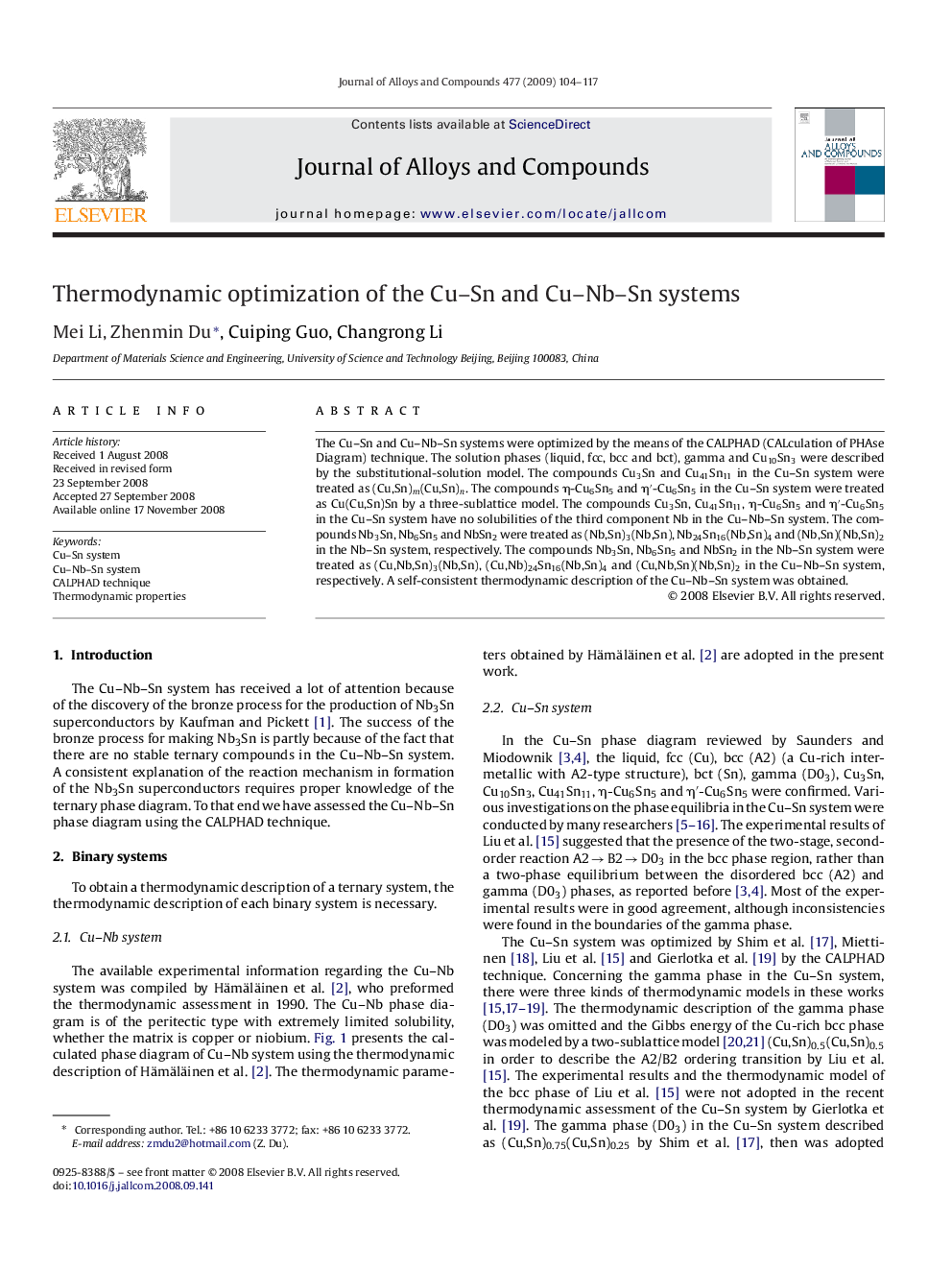| Article ID | Journal | Published Year | Pages | File Type |
|---|---|---|---|---|
| 1622212 | Journal of Alloys and Compounds | 2009 | 14 Pages |
The Cu–Sn and Cu–Nb–Sn systems were optimized by the means of the CALPHAD (CALculation of PHAse Diagram) technique. The solution phases (liquid, fcc, bcc and bct), gamma and Cu10Sn3 were described by the substitutional-solution model. The compounds Cu3Sn and Cu41Sn11 in the Cu–Sn system were treated as (Cu,Sn)m(Cu,Sn)n. The compounds η-Cu6Sn5 and η′-Cu6Sn5 in the Cu–Sn system were treated as Cu(Cu,Sn)Sn by a three-sublattice model. The compounds Cu3Sn, Cu41Sn11, η-Cu6Sn5 and η′-Cu6Sn5 in the Cu–Sn system have no solubilities of the third component Nb in the Cu–Nb–Sn system. The compounds Nb3Sn, Nb6Sn5 and NbSn2 were treated as (Nb,Sn)3(Nb,Sn), Nb24Sn16(Nb,Sn)4 and (Nb,Sn)(Nb,Sn)2 in the Nb–Sn system, respectively. The compounds Nb3Sn, Nb6Sn5 and NbSn2 in the Nb–Sn system were treated as (Cu,Nb,Sn)3(Nb,Sn), (Cu,Nb)24Sn16(Nb,Sn)4 and (Cu,Nb,Sn)(Nb,Sn)2 in the Cu–Nb–Sn system, respectively. A self-consistent thermodynamic description of the Cu–Nb–Sn system was obtained.
